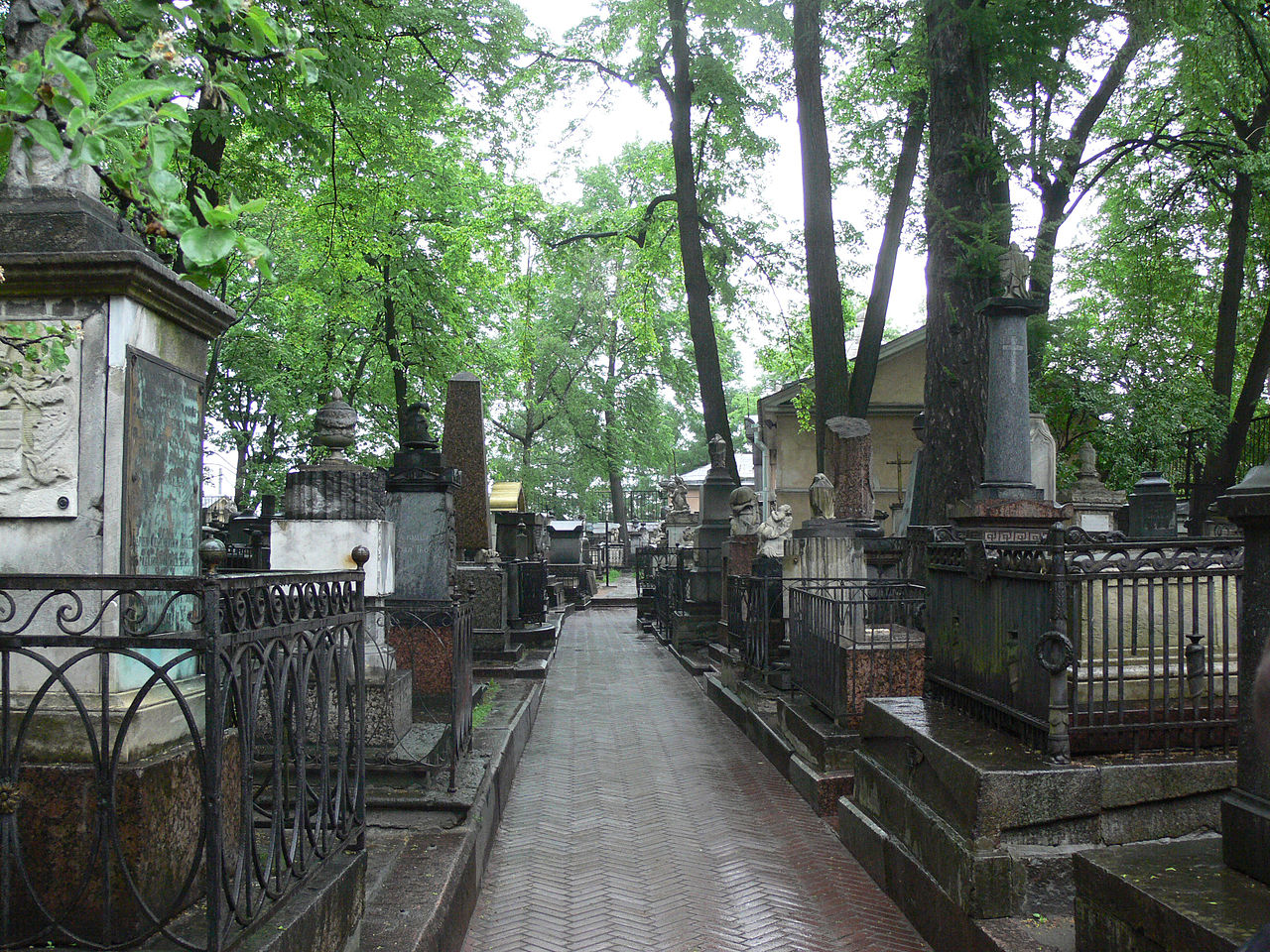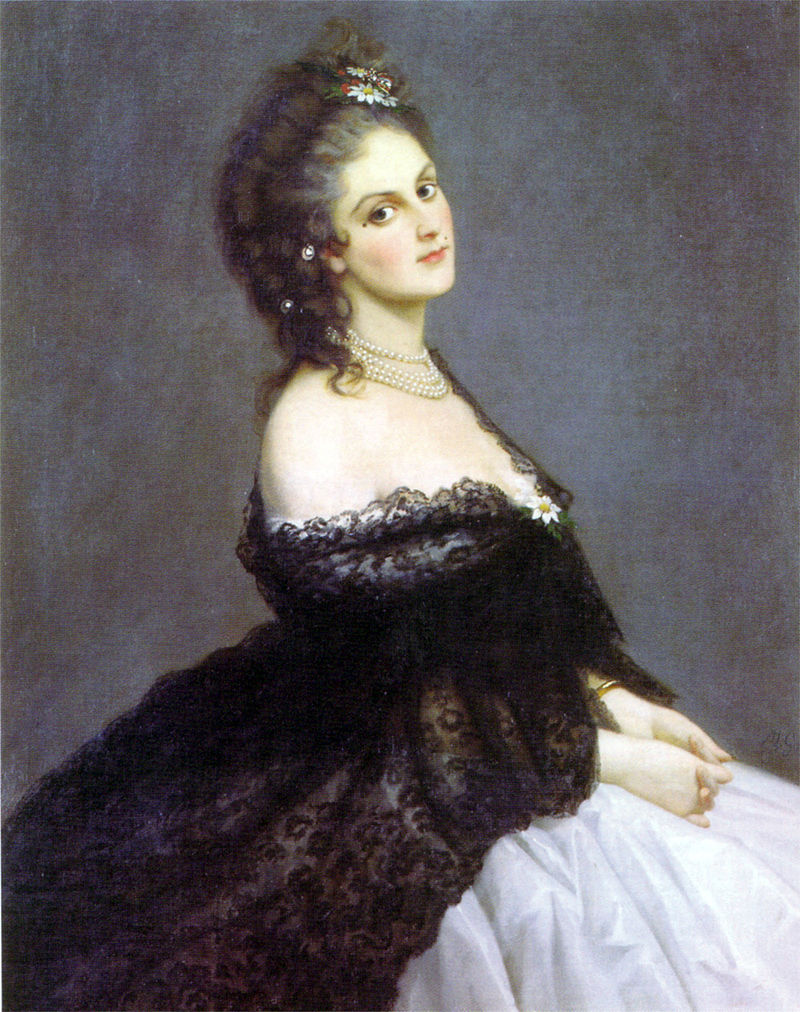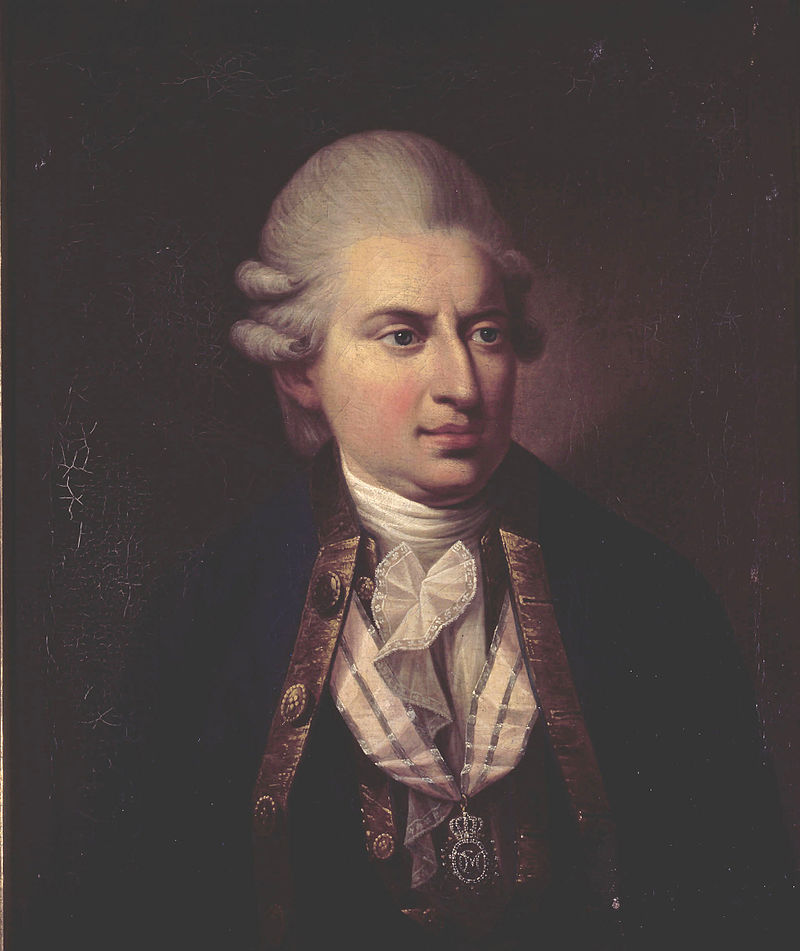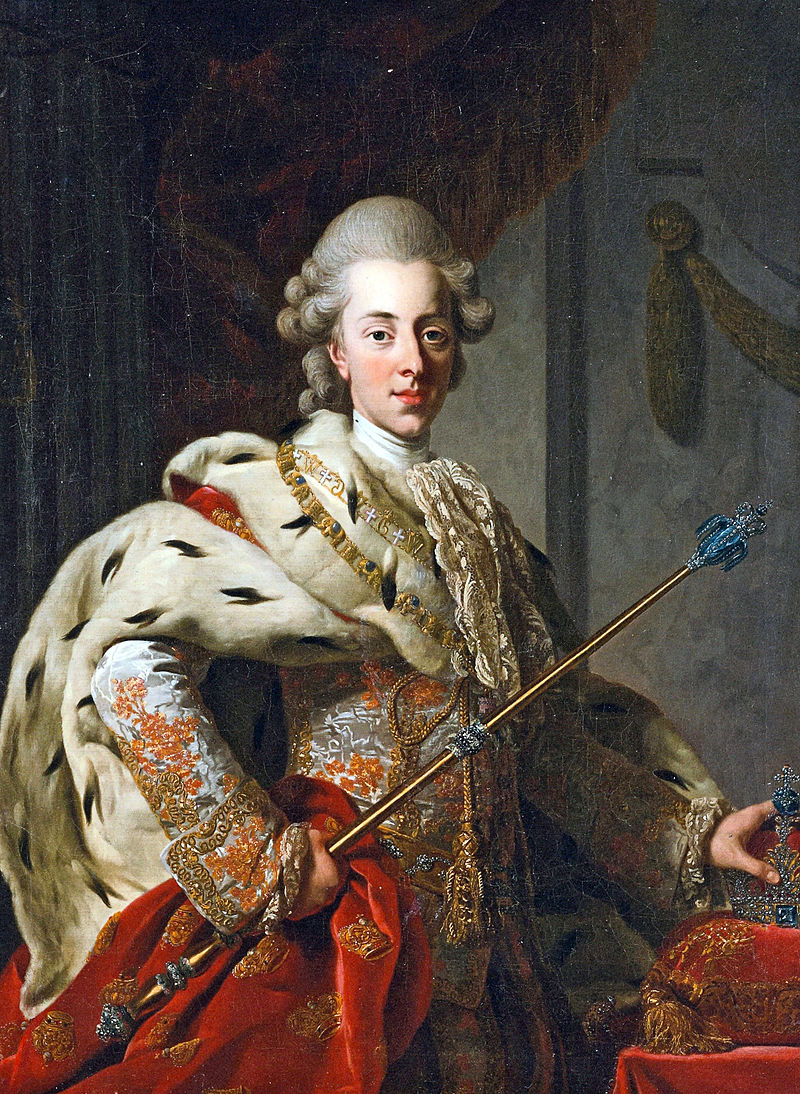by Susan Flantzer
© Unofficial Royalty 2020

Credit – Wikipedia
- Patronymics: In Russian, a patronymic is the second name derived from the father’s first name: the suffix -vich means “son of” and the suffixes -eva, -evna, -ova, and -ovna mean “daughter of”.
Count Sergei Vasilievich Saltykov was the first lover of the future Catherine II (the Great), Empress of All Russia, and possibly the father of her son Paul I, Emperor of All Russia. Born in 1726, Sergei was the son of Vasily Fedorovich Saltykov and Princess Marya Alexeievna Golitsyna. The Saltykovs were an old Boyar (noble) family as were the Romanovs originally. The later Saltykovs were descended from Tatiana Feodorovna Romanova, a sister of Michael, the first Romanov Tsar. The mother of Anna I, Empress of All Russia (reigned 1730 – 1740) was Praskovia Feodorovna Saltykova, the wife of Ivan V, Tsar of All Russia (reigned 1682 – 1696). During the reign of Anna I, she depended on her Saltykov relatives and Sergei’s father Vasily Fedorovich Saltykov served in various positions. In 1741, Vasily Fedorovich took part in the coup that put the only surviving child of Peter I (the Great), Emperor of all Russia (reigned 1682 – 1725), Elizabeth, Empress of All Russia (reigned 1741 – 1762), on the throne.
Sergei had seven siblings:
- Agrafena Vasilievna Saltykova (1709 – 1762), married Prince Alexei Dmitrievich Golitsyn, had four children
- Alexei Vasilievich Saltykov (?), died young
- Peter Vasilievich Saltykov (1724 – after 1796), married Princess Maria Fedorovna Solntseva-Zasekina
- Maria Vasilievna Saltykova (1728 – 1792), married Adam Vasilievich Olsufiev, had seven children
- Anna Vasilievna Saltykova (1729 – 1799), married Prince Matvey Alekseevich Gagarin, no children
- Alexander Vasilievich Saltykov (died 1803)
- Ekaterina Vasilievna Saltykova (1732 – 1774), married Peter Ivanovich Izmailov, had two children
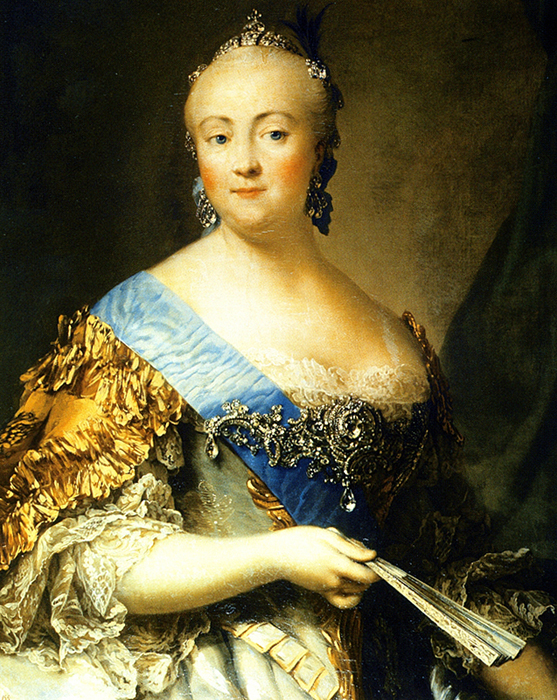
Elizabeth, Empress of All Russia; Credit – Wikipedia
Elizabeth, Empress of Russia had never married and now that she was Empress of Russia, she needed an heir. On November 18, 1742, Empress Elizabeth named Karl Peter Ulrich, Duke of Holstein-Gottorp (the future Peter III, Emperor of All Russia), the 14-year-old son of her deceased younger sister Anna Petrovna, as her successor. Elizabeth’s nephew converted to Russian Orthodoxy and was given the name and title Grand Duke Peter Feodorovich. It was important to Elizabeth that Peter marry so that the Romanov dynasty could be continued. Elizabeth arranged for Peter to marry his second cousin, Sophie of Anhalt-Zerbst, later Catherine II (the Great), Empress of All Russia. Sophie converted to Russian Orthodoxy, was given the title Grand Duchess and the name Ekaterina (Catherine) Alexeievna, and married Peter on August 21, 1745. Later in the evening of their wedding day, Catherine and Peter were taken to their bedchamber and put to bed. The marriage was not consummated that night and many historians doubt that the marriage was ever consummated.
Peter and Catherine’s marriage was not a happy one. Peter took Elizabeth Romanovna Vorontsova as his mistress and Catherine had affairs. Catherine’s first affair was with Sergei Vasilievich Saltykov. Because Sergei’s father was a supporter of Empress Elizabeth, and because of Sergei’s personal qualities, he had a prominent place in court life as Peter’s Chamberlain. Sergei became the person closest to both Peter and Catherine.

Peter and Catherine; Credit – Wikipedia
Sergei had observed how Catherine was ignored by Peter and how bored she was with the court. The rumors that Catherine was still a virgin encouraged him even more to pursue a relationship, and so he did. Sergei made sure he saw Catherine every day and that he was constantly by her side. Sometime in August or September 1752, the affair between Sergei and Catherine started. However, once their affair, Sergei worried that Catherine could become pregnant when she was thought to be a virgin.
Around the same time, Empress Elizabeth realized that the marriage of Peter and Catherine had never been consummated. It was suggested to her that Peter become acquainted with an attractive sexually experienced woman who was his social inferior. Madame Groot, the widow of a court painter was given the assignment and was successful in acquainting Peter with the mechanisms of sex. Thereafter, if Catherine became pregnant, no one could say for sure that Sergei was the father.

The future Paul I, Emperor of All Russia as a child; Credit – Wikipedia
Catherine did become pregnant and on October 1, 1754, a son was born, the future Paul I, Emperor of All Russia. Empress Elizabeth was overjoyed that there was an heir. Of course, Empress Elizabeth knew that Sergei could be Paul’s father but she did not care. To get Sergei out of the way, he was sent on a diplomatic mission to the Swedish court to deliver the official announcement of Paul’s birth. Catherine wrote: “This meant that I was immediately going to be separated from the one person I cared about the most.”
Sergei was away in Sweden for five months. Soon after he returned to St. Petersburg, Sergei learned that he was to be sent to Hamburg as the resident Russian minister and so his separation from Catherine would be permanent. He was glad the affair was over and that he was no longer engaged in a dangerous liaison. Sergei spent the subsequent years of his known life at various European courts. After 1764, there is no mention of Sergei Saltykov, who would have been 38, in official records. Some sources have his death occurring in 1765. Other sources say that he left for France and went missing there during the French Revolution. Another story says he lived until the reign of Paul and then he died in 1807.
In her memoirs, Catherine strongly implied that Sergei Saltykov was the biological father of her son Paul and that her marriage with Peter had never been consummated. However, Paul greatly resembled Peter in both character and appearance. Catherine, in her memoirs, countered with the well-known “ugliness” of Sergei’s brother Peter. If Paul I, Emperor of All Russias was the son of Sergei Saltykov, then all subsequent Romanovs were not genetically Romanovs.
This article is the intellectual property of Unofficial Royalty and is NOT TO BE COPIED, EDITED, OR POSTED IN ANY FORM ON ANOTHER WEBSITE under any circumstances. It is permissible to use a link that directs to Unofficial Royalty.
Works Cited
- Flantzer, Susan, 2018. Catherine II (The Great), Empress Of All Russia. [online] Unofficial Royalty. Available at: <https://www.unofficialroyalty.com/empress-catherine-ii-the-great-of-russia/> [Accessed 9 July 2020].
- Flantzer, Susan, 2018. Peter III, Emperor Of All Russia. [online] Unofficial Royalty. Available at: <https://www.unofficialroyalty.com/emperor-peter-iii-of-russia/> [Accessed 9 July 2020].
- Lincoln, W. Bruce. (1981). The Romanovs: Autocrats of All the Russias. New York, NY.: Doubleday
- Massie, Robert, (2016). Catherine the Great. London: Head of Zeus.
- Ru.wikipedia.org. 2020. Салтыков, Сергей Васильевич. [online] Available at: <https://ru.wikipedia.org/wiki/%D0%A1%D0%B0%D0%BB%D1%82%D1%8B%D0%BA%D0%BE%D0%B2,_%D0%A1%D0%B5%D1%80%D0%B3%D0%B5%D0%B9_%D0%92%D0%B0%D1%81%D0%B8%D0%BB%D1%8C%D0%B5%D0%B2%D0%B8%D1%87> [Accessed 9 July 2020].















